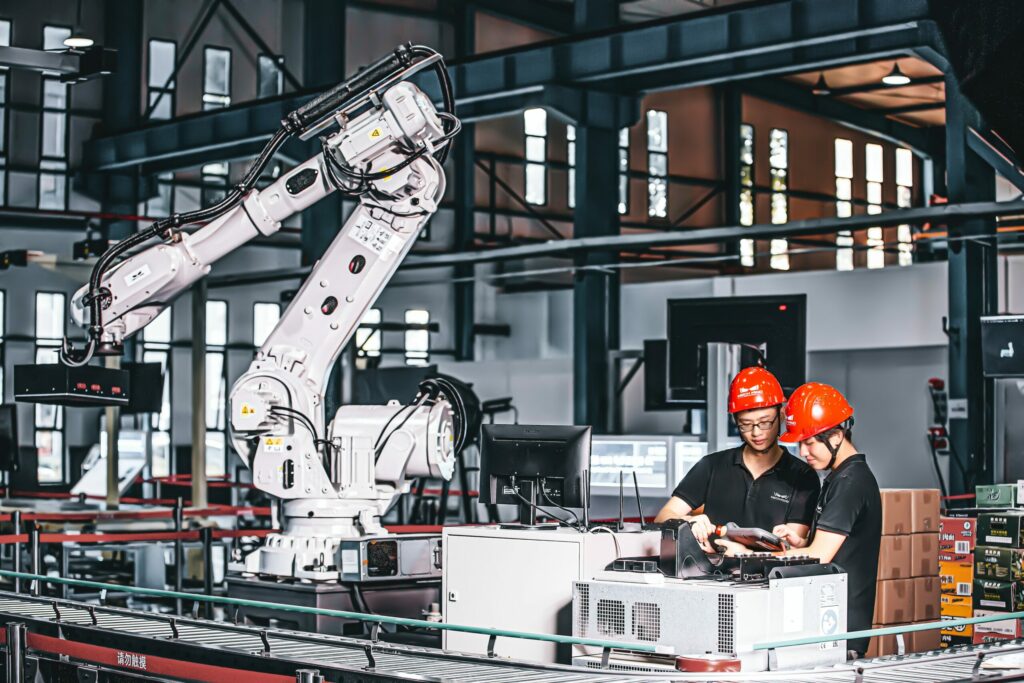WORKFORCE MANAGEMENT
The fourth industrial revolution or Industry 4.0—where humans and machines work in tandem—is well underway, and it offers a huge business opportunity to manufacturers. The value creation potential of Industry 4.0 for manufacturers and suppliers could be $3.7 trillion dollars by 2025, according to research by McKinsey & Company and the World Economic Forum.
Although the transformation to Industry 4.0 will involve virtually all aspects of a manufacturer’s business— processes, asset management, customer experience, and workforce management—it is in large part a people-centric transformation.
To gain a footing in Industry 4.0, companies will need to hire, deploy, retain, and continually retrain the next-generation workforce. “If the focus is only on the introduction of new digital tools without the full enablement of the organization, the implementation of Industry 4.0 will, at best, capture application-specific value at the fringes,” McKinsey writes. “In contrast, leveraging the organization’s domain and process expertise as well as sustainably building up new skillsets and capabilities supports a successful transformation with lasting impact for the company overall.”
Successfully transitioning to an Industry 4.0 business model will require the next generation of workforce management solutions. It also will require a smart implementation of these new solutions to overcome potentially debilitating business trends.
See the peril and the opportunity
The manufacturing industry had slipped into a recession in the spring of 2020 even before the global health pandemic crisis temporarily shut down virtually all manufacturing activity. Numerous manufacturing indices showed precipitous month-to-month declines. One key metric from the Institute of Supply Management showed a manufacturing contraction in April 2020 not seen since April 2009.
The specific impact of the pandemic for the manufacturing sector could evolve over several years. But there are signs the onset of new business restraints could accelerate the adoption of Industry 4.0 principles and practices. For example, adoption of automation could accelerate to keep workers safer by enabling social distancing without adversely impacting productivity.
Understand the looming skills shortage
In manufacturing, a skills mismatch exists today—and could worsen in the future. Two data points cited recently by Deloitte illustrate the point. In 2018, humans carried out 71% of tasks, but by 2022 that percentage will drop to 58%. This will obviously lead to jobs being eliminated. But the report also notes that although 75 million jobs will be eliminated, 133 million new jobs will be created.
Many of these new 133 million jobs will require a new type of skill—soft human skills such as critical thinking and creativity—in addition to expertise in the latest digital technology. According to a meta data analysis of 135 publications focused on Industry 4.0 work environments, key characteristics of worker readiness for Industry 4.0 include: enthusiastic IT skills development; tolerance of environmental dynamism and emergent problems; a well calibrated level of trust toward technological agents and automation systems; skill in supporting digital-mediated collaboration problem-solving; creative and adaptive strategic-thinking skills; data-analysis knowledge; and software application skills.
At times, employees can be ahead of their employer in their company’s digital transformation.
Too often, according to Accenture, the workforce is evolving at a rapid pace, incorporating new technology-driven abilities and skills to deliver value for the company—while the enterprise itself is still optimized for the workforce of the past, leaving a disconnect that reaches through the organization. Companies have created a new digital divide between themselves and the workforce that helped them grow.6
Understand the technology gap
For years, manufacturers have invested heavily in technology to improve their business operations and success in the marketplace. The successful transition to Industry 4.0 requires a technology strategy optimized specifically for the workplace of the future. In an Industry 4.0 environment, you’ll expect a lot more from your employees. They’ll need new tools to deliver on that expectation.
The technology evolution inherent in Industry 4.0 includes:
- Artificial intelligence (AI): Technology that can think and predict outcomes. Cognitive AI extends human capabilities by sensing, comprehending, acting, and learning to help people achieve more. AI can help a business understand what employee behaviors are critical to its long-term success.
Three-quarters of the respondents in a Deloitte survey agreed that AI technologies already empower their employees to make better decisions, and the same proportion foresees human workers and AI augmenting each other, encouraging new ways of working. Seven in ten believe AI will enhance employee job performance and satisfaction. - Machine learning: Technology that can improve with experience. Machine learning technology helps manufacturers predict demand, making recommendations with very little need for human interaction. In workforce management, it helps meet the needs for better data on which to base hiring and staffing decisions. For example, machine learning aids in deciding critical staffing questions such as whether it’s better to fill a staffing gap with permanent or temporary workers.
- Advanced robotics: Technology that can interact with humans automatically.
- “Intelligent” mobility: Mobile technology produces a wide range of benefits for manufacturers and their employees. It gives employees self-service capabilities and, in some instances, the ability to work remotely with no adverse impact on overall operations. It can improve data collection on which to base labor planning and optimization decisions.
Deliver an integrated people and technology strategy
The following strategies can be used to address the workforce capability gaps:
Upgrade current corporate educational structures. Develop and implement alternatives for life-long employee learning.
- Upskill current employees. Deliver continuing education initiatives and skills training across all demographic groups, education levels, and locations.
- Engage your employees in your business and in the role they play in its success. Build and maintain strong employee teams. Give employees sense of purpose for themselves and their role in your business.
Manufacturers successful in transitioning to an Industry 4.0 business model will:
- Eliminate silos of data and obstacles to visibility.
- Empower employees by giving them transparency and as much control as possible over their day-to-day work experience and their long-term career.
- Maintain compliance seamlessly while constantly reskilling workforce.
- Better recruit and retain employees.
Deploying a workforce with transferable skills and versatility allows your organization to adapt quickly and effectively as business requirements change. Inherent in this is the willingness of workers to adapt quickly as machines take over some of their tasks. As technology continually takes over manual and/or repetitive tasks, employees will be freed—if they are adequately trained—to perform more work that requires uniquely
human skills.
An inextricable link: Industry 4.0 and advanced workforce management
Manufacturers understand the inextricable link between Industry 4.0 and advanced workforce management strategies. According to a recent survey by PricewaterhouseCoopers and The Manufacturing Institute, manufacturers expect the transition to Industry 4.0 to accelerate in the coming years and 73% are planning to increase their investment in smart factory technology over the next year to keep pace. According to 70% of respondents, the biggest impact of robotics on the workforce in the next five years will be an increased need for talent to manage in a more automated, flexible production environment as well as the creating of new jobs to engineer robotics and their operating systems.
It’s clear the transition to Industry 4.0 is going to happen and that it will involve new working relationships between man and machine. Precisely how the transition will occur isn’t clear. To address what is known about Industry 4.0—and what is unknown—manufacturers will need to invest in workforce management technology and in their human resources to make sure they can leverage the opportunities inherent in Industry 4.0.




